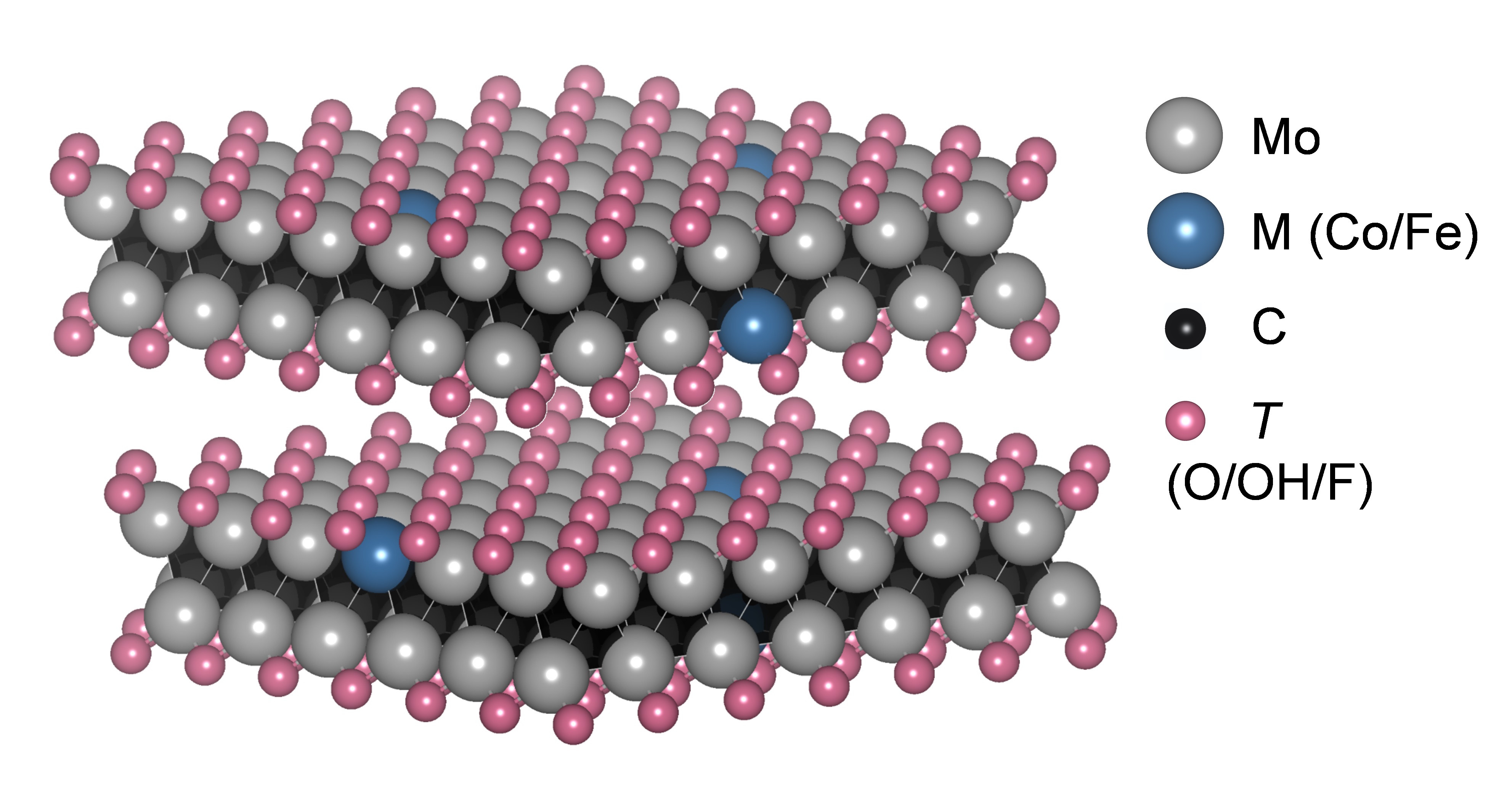Single-Atom Substitution in Two-Dimensional Molybdenum Carbide: Implications for Electrocatalysis
Two-dimensional carbides and nitrides (MXenes) represent an excellent platform for the fundamental catalysis studies due to their well-defined and tunable structure and theoretically predicted high activity in numerous catalytic reactions.1 However, the scope of metals capable of forming thermodynamically stable MXenes is limited mostly to early transition metals, making the investigation of properties inherent to mid or late transition metal carbides/nitrides challenging. Here, we present the synthesis and structural characterization of the Mo2CTx:M phases2,3 (M = Co, Fe; Tx = O, OH, F surface terminations), where M substituents occupy molybdenum positions in the Mo2CTx lattice, providing isolated Co/Fe sites. Our studies demonstrate that metal M substitution imparts Mo2CTx:M carbides high catalytic activity in the hydrogen evolution and oxygen reduction reactions. An examination of the electrode materials after catalytic tests proved high stability of Mo2CTx:M (M = Co) carbide under reductive conditions (hydrogen evolution) and complete decomposition of Mo2CTx:M (M = Fe) under oxygen electrocatalysis conditions. The latter has proven to be a common phenomenon for MXene family applied to oxygen electrocatalysis.
Overall, our work expands the compositional space of the MXenes by introducing materials with isolated metal sites incorporated into the matrix of Mo2CTx. Our results highlight the general applicability of the developed synthetic approach and illustrate that tailoring the properties of MXenes for a specific application can be achieved via targeted substitution of the host metal, as well as showcases the intrinsic stability ranges for the use of MXenes in electrocatalysis.

Figure 1. Structure of Mo2CTx:M.
[1] Babak Anasori, Maria R. Lukatskaya, Yury Gogotsi, Nature Reviews Materials, 2017, 2, 16098.
[2] Denis A. Kuznetsov, Zixuan Chen, Priyank V. Kumar, Athanasia Tsoukalou, Agnieszka Kierzkowska, Paula M. Abdala, Olga V. Safonova, Alexey Fedorov, Christoph R. Müller, Journal of the American Chemical Society, 2019, 141, 17809-17816.
[3] Denis A. Kuznetsov, Zixuan Chen, Paula M. Abdala, Olga V. Safonova, Alexey Fedorov, Christoph R. Müller, Journal of the American Chemical Society, 2021, 143, 5771-5778.